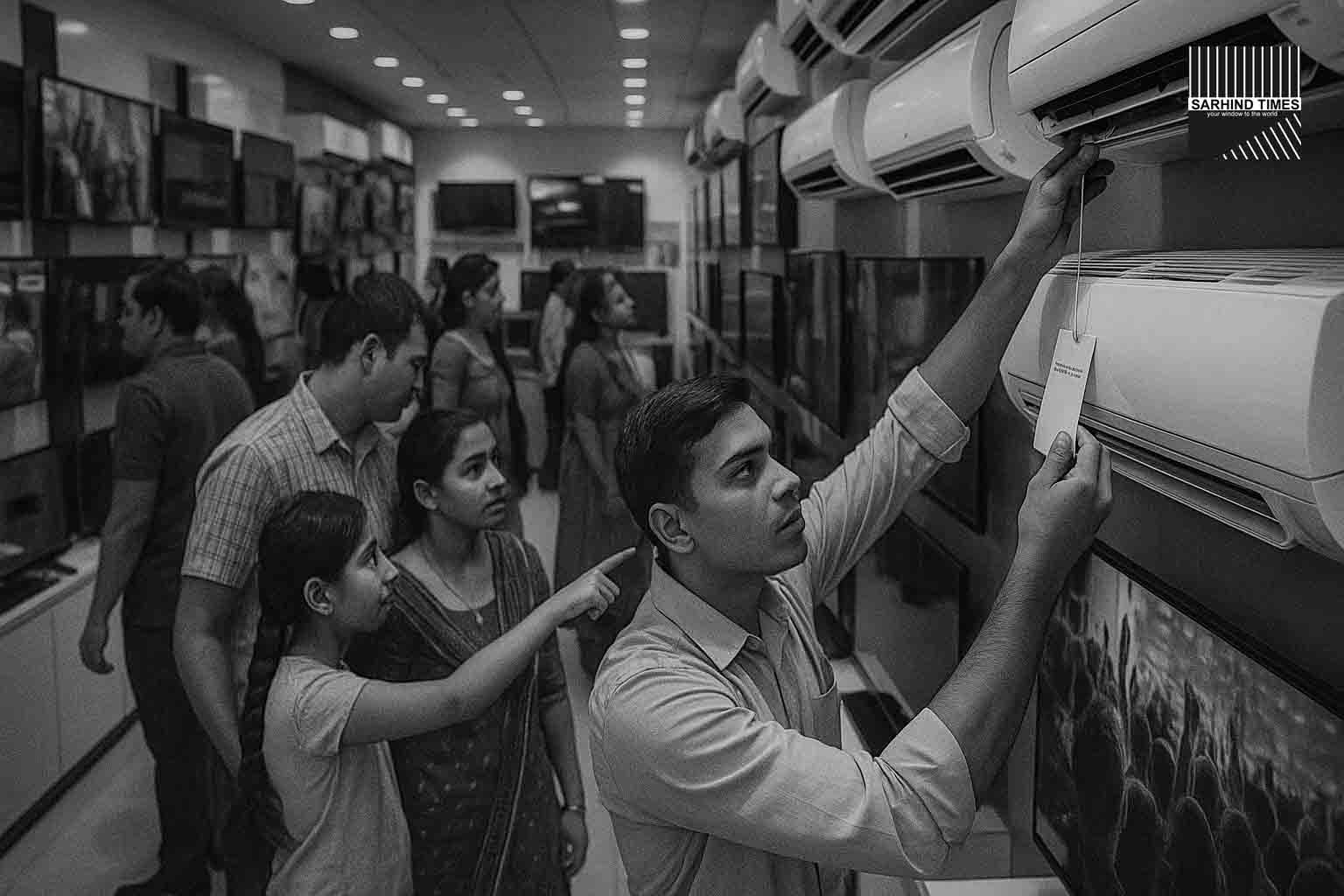The first day of the new GST slab reform has already shown ripple effects across India’s consumer durables market. From Delhi’s Karol Bagh and Bengaluru’s Brigade Road to Mumbai’s suburban malls and Kolkata’s electronics hubs, retailers reported footfall spikes and unprecedented conversion rates on air-conditioners and televisions. The reduction in Goods and Services Tax (GST) for selected appliances has lifted consumer sentiment ahead of the festive season, effectively unlocking pent-up demand.
Industry observers note that the move is not only a tactical win for consumers but also a test case for how GST tweaks can act as short-term stimulants in India’s vast domestic economy. This long-form analysis dives deep into the numbers, reactions, industry insights, and possible implications of the new GST slabs on consumer spending patterns, corporate strategies, and state revenues.
GST Cuts in Context: What Changed
On Monday, the Central Board of Indirect Taxes and Customs (CBIC) notified revised GST slabs for certain white goods. The rates for mid-range televisions and energy-efficient air-conditioners were brought down by 4–6 percentage points.
- ACs (up to 1.5 ton, 3-star and above): GST dropped from 28% to 22%.
- Televisions (up to 43 inches): GST dropped from 28% to 18%.
- Clarifications issued: FAQs detailed how old invoiced stock should be managed, and how benefits must be passed to consumers in real-time.
The cuts are part of a broader simplification roadmap, where the government aims to gradually reduce the highest tax slab for consumer goods while maintaining revenue neutrality through volume expansion.
Day 1 Consumer Response: A Surge Across Metros
Retailers described Monday as “Diwali come early.”
- Delhi NCR: Stores in Connaught Place and Gurgaon reported AC sales jumping by 40% compared to last week’s Monday baseline.
- Mumbai: Large-format stores in Andheri and Navi Mumbai said families that had deferred TV upgrades pulled the trigger once prices visibly dropped on shelves.
- Bengaluru & Hyderabad: Tech-driven metros saw a 35–50% surge in demand for smart TVs.
- Kolkata: Chain retailers highlighted refrigerators and washing machines beginning to move faster as buyers bundled purchases.
One Bengaluru-based retailer said: “We had customers walking in with screenshots of pre-GST and post-GST pricing, comparing discounts in real-time. The reduction gave them confidence they weren’t just getting festive marketing gimmicks but actual savings.”
Industry Voices: Retailers, Analysts & Consumer Groups
Retailers: The All India Consumer Electronics Dealers Association said the new slabs have revived “the aspirational middle class’s purchasing power.”
Analysts: Brokerage houses like Motilal Oswal and Edelweiss issued flash notes predicting a 10–12% bump in festive-quarter volumes for listed durables firms.
Consumer Groups: The Consumer Guidance Society of India welcomed the move but demanded strict oversight: “Retailers and manufacturers must not use the reform as an excuse to mask margins. Transparent invoicing is critical.”
Impact on Online vs Offline Retail
E-commerce platforms were quick to match offline markdowns. Flipkart launched “GST Price Slash” banners, while Amazon integrated price comparisons. Offline retailers, however, held an edge on Day 1 because of instant availability and festive financing offers.
- Offline footfall surged 35% in Tier-1 metros.
- Online platforms expect acceleration by the weekend as digital campaigns kick in.
- Hybrid consumers often checked prices online before negotiating offline purchases.
Supply Chains & Inventory Cycles
The immediate challenge lies in ensuring adequate supply:
- AC stock: Many retailers had limited pre-winter inventory but are now rushing to place fresh orders.
- TV stock: Global supply chains remain tight, especially for smart panels, with shipment lead times of 4–6 weeks.
- Manufacturers: Companies like LG, Samsung, and Voltas are reportedly recalibrating festive quarter production plans.
State Finances: A Double-Edged Sword
While consumers are celebrating, state finance departments are crunching numbers. GST cuts may reduce immediate tax inflows:
- Short-term hit: A 4–6% cut on high-ticket durables means thousands of crores of potential revenue foregone in Q3.
- Long-term hope: Higher volumes may offset losses if momentum sustains into Q4 and beyond.
- Revenue-sharing: States reliant on GST compensation cess may feel pressure if collections lag.
Wider Economic Significance
India’s consumer durables industry is worth ₹76,000 crore annually, with ACs and TVs comprising nearly 40%. Policy tweaks in this sector are closely watched for their signaling effect on middle-class spending.
Economists say GST cuts could have multiplier effects:
- Boosting Consumption: Encourages households to advance purchases.
- Corporate Earnings: Higher volumes improve operating leverage for listed firms.
- Employment: Sales growth may expand temporary hiring during the festive rush.
- Inflation Control: Lower effective prices keep headline CPI moderated.
Expert Commentary
- Prof. Arvind Subramanian (Former CEA): “GST flexibility shows that the tax system is not static. It can be tweaked to address demand cycles. However, frequent tinkering must be avoided.”
- Retail Strategy Consultant, Mumbai: “If benefits are sustained, it could be a turning point for consumer durables, similar to when GST first rationalized FMCG categories.”
- Consumer Rights Lawyer: “We urge the Competition Commission and tax departments to monitor anti-profiteering compliance closely.”
Festive Season Outlook
- Demand drivers: Lower GST, easy EMI schemes, rising disposable incomes, pent-up demand.
- Risks: Supply shortages, aggressive pricing wars, uneven pass-through in Tier-2/3 towns.
- Forecast: Analysts expect 15–20% growth in festive quarter durable sales versus last year.
Conclusion: Reform Meets Real Economy
The Day 1 response is proof that even minor tax tweaks can stimulate demand when timed with consumer cycles. Whether this GST cut proves a short-term festive booster or a longer-term demand stabilizer will depend on supply chains, state revenues, and consumer confidence. For now, the message from showrooms is clear: households are buying big-ticket items again.
#GST #ConsumerDemand #Durables #Retail #FestiveSeason #Economy #IndiaGrowth #ConsumerRights






















+ There are no comments
Add yours